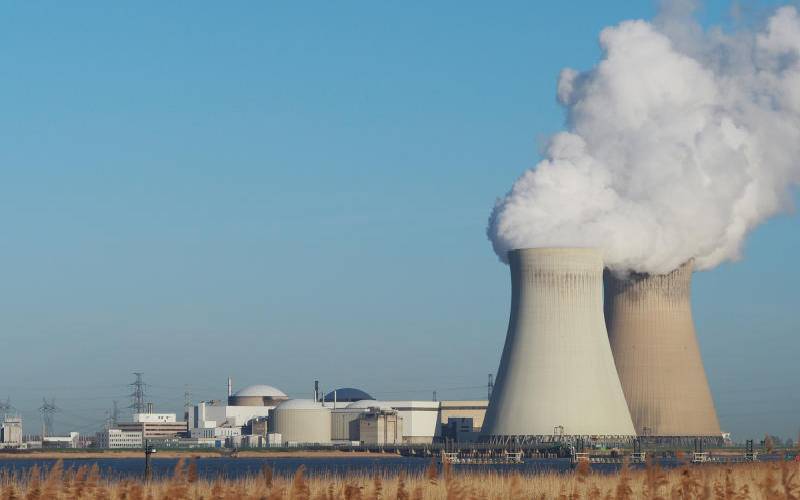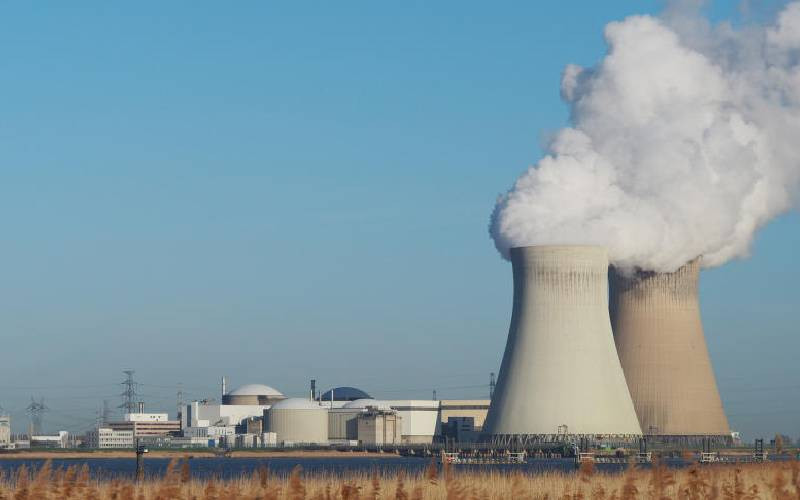
It appears that Kenya is determined to build a nuclear power plant despite reservations expressed against this project over the years by many concerned Kenyans.
The building of the nuclear electric power plant appears to be driven by factors other than the national interest. A cursory examination of economic, environmental and safety issues militates against the nuclear electricity option.
Kenya plans to build a 1,000 MWe nuclear power plant at a cost of US$5 billion. The National Environment Management Authority has requested for comments on a Strategic Environmental and Social Assessment Report for the Nuclear Power Programme for Kenya.
An expenditure of $5 billion for a 1,000 MWe power plant is a poor economic investment. Solar energy power plants can be built at much lower costs. For example, the Sweihan Power plant in Abu Dhabi, the UAE with an installed capacity of 1,177 MWe cost US$870 million; the Kurnool Solar Park plant in India delivers 1,000 MWe at a cost of US$1 billion. Right from the outset, the cost of constructing a solar power plant has an economic head start over a nuclear power plant. The planned expenditure of $5 billion by Kenya could get us more than 5,000 MWe from solar power plants, instead of 1,000 MWe.
Operational costs for solar plants will be cheaper in terms of fuel, personnel and plant maintenance costs.
The amount of money spent so far in budgetary allocations to the Kenya Nuclear Electricity Board, and its successor, the Nuclear Power Energy Agency for salaries, training, and operations, is money that could have been used to build solar or wind energy plants in Kenya, or to further develop the abundant geothermal resources in the country.
Aside from economic arguments, there are numerous environmental and safety concerns. Radioactive waste that is generated at a nuclear power plant will be around for more than 300,000 years, and some of the radionuclides will be around for millions of years. The problem of radioactive waste disposal has not been conclusively resolved anywhere in the world.
There is only one operational nuclear waste disposal site in the world – the Waste Isolation Pilot Project in New Mexico, USA; another site is proposed to be in Finland. Sweden’s underground waste repositories at Forsmark have not been approved as final disposal sites for nuclear waste.
The challenges and costs of ensuring security and containment of radioactive waste for hundreds of thousands of years is fraught with uncertainties, even for the best managed governance systems in the world.
The safe handling of radioactive material in Kenya is an obvious concern. Today, we are told of medical personnel in Kenya having to work without PPEs: Will the situation be any different for PPEs for nuclear energy personnel? Just like there are International Atomic Energy Agency (IAEA) safeguard safety guidelines, we equally have WHO guidelines currently for health workers. Do authorities in Kenya care to ensure such guidelines are adhered to?
Corruption in handling radioactive materials is another concern. Donated PPEs were diverted for sale at the airport. Will nuclear materials not be diverted and sold to the highest bidder? Despite any security safeguards that may be in place in Kenya, it has become apparent that Kenyans have their price.
There are also concerns about a terrorism attack on a nuclear power station. Despite the best security arrangements, Iran has recently experienced fires at its nuclear power stations, which are being attributed to ‘sabotage’. A more random sabotage event would definitely lead to catastrophic damage to the nuclear power station, and inevitable leak of radioactive materials into the surrounding environment.
The touted lower costs of nuclear electricity do not take into consideration environmental costs, and costs of nuclear accidents. The cost of cleaning up the Fukushima nuclear accident has been estimated at US$187 billion, and some estimates state that the final clean up cost will be in excess of 1 trillion dollars.
This does not take into account the lost human lives in the accident. Fukushima has had a death toll in excess of 2,000 persons to date, and counting.
Stay informed. Subscribe to our newsletter
Many countries around the world are shutting down their nuclear power plants. It is not inconceivable that Kenya will be sold second hand components of the power plants being dismantled around the world.
Kenya cannot afford the costs of nuclear electricity, and the attendant human cost.
The IAEA is misdirecting its technical assistance efforts in Kenya. Instead of the IAEA putting resources into nuclear electricity generation, the IAEA should be focusing its assistance to Kenya on other areas of peaceful uses of nuclear technology. In particular, nuclear technology can be of great assistance to Kenya in agriculture, medicine, geothermal energy, water resources, and pest control. These are the peaceful uses of nuclear technology that have direct benefits to humanity, not nuclear electricity.
-Prof Mwakio teaches Environmental Geochemistry at Pwani University. His PhD thesis was on the chemistry of possible materials for hosting radioactive wastes for safe disposal
 The Standard Group Plc is a
multi-media organization with investments in media platforms spanning newspaper
print operations, television, radio broadcasting, digital and online services. The
Standard Group is recognized as a leading multi-media house in Kenya with a key
influence in matters of national and international interest.
The Standard Group Plc is a
multi-media organization with investments in media platforms spanning newspaper
print operations, television, radio broadcasting, digital and online services. The
Standard Group is recognized as a leading multi-media house in Kenya with a key
influence in matters of national and international interest.
 The Standard Group Plc is a
multi-media organization with investments in media platforms spanning newspaper
print operations, television, radio broadcasting, digital and online services. The
Standard Group is recognized as a leading multi-media house in Kenya with a key
influence in matters of national and international interest.
The Standard Group Plc is a
multi-media organization with investments in media platforms spanning newspaper
print operations, television, radio broadcasting, digital and online services. The
Standard Group is recognized as a leading multi-media house in Kenya with a key
influence in matters of national and international interest.









